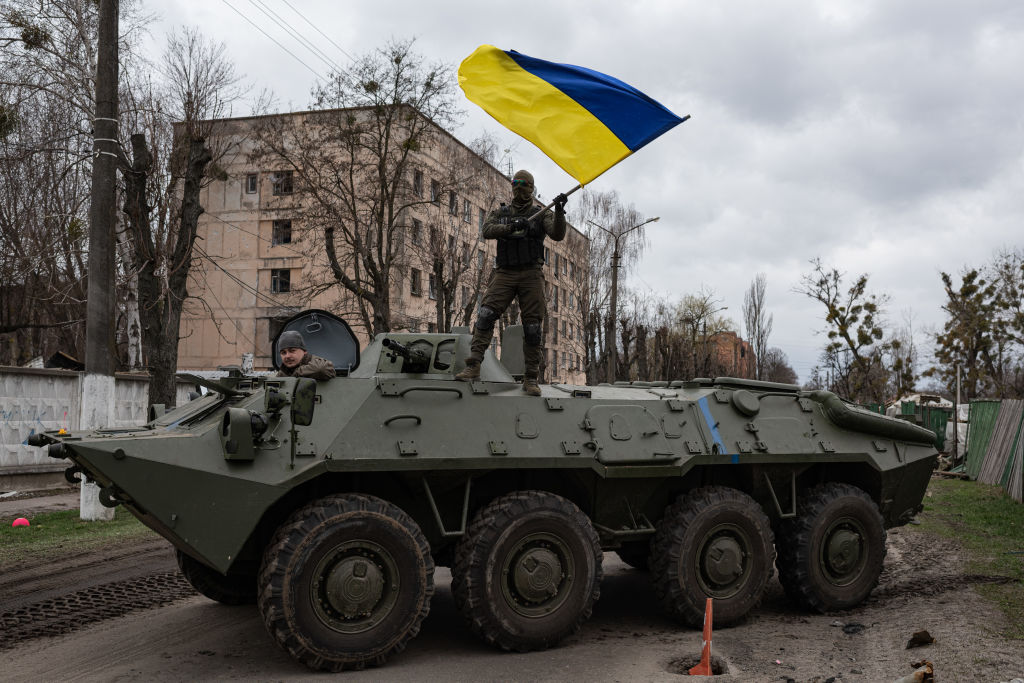There was a time when Ukraine’s accession to Nato was a fantasy. It wasn’t just that Ukraine was dismally poor, politically unstable, or highly corrupt – though all these factors played a role. Nor was it just that Ukraine’s rusting, unwieldy post-Soviet wreck of an armed force was not exactly Nato material.
The bigger reason was Russia. The West wanted to indulge Russia and to partner with it. It wanted Russia to know that while its claims to a special sphere of influence in Ukraine could not be publicly accepted, they could and would be tacitly respected if Russia learned to behave.
Russia’s brutal invasion of Ukraine upended all that. The Kremlin has burned bridges to the West, blatantly, with great relish, and without remorse. This newly radicalised state no longer has a stake in the European security order. Whatever legitimate security interests Russia may be judged to have had prior to invading Ukraine, it freely and unilaterally abrogated them and thus obviated the need to humour the Russians lest they become upset and throw a fit.
This newly radicalised Russia no longer has a stake in the European security order
Admitting Ukraine into Nato is no longer an outlandish, provocative idea. If anything it seems like the natural thing to do. It helps that, almost a year after the Russian invasion, Kyiv has developed a close cooperative relationship with Nato allies. The West has agreed to supply Ukraine with sophisticated modern weapons, including most recently Leopard 2 and M1 Abrams tanks. There is already a high degree of intelligence sharing and joint planning. Ukraine is already a de facto Nato ally, and an incredibly effective one at that.
It would at first seem unlikely that a country mired in war with a nuclear power would make a good candidate for Nato membership, but nor does it have to happen overnight. Putting the offer on the table could be an attractive way to prefigure Europe’s postwar security environment.
Ukraine’s Nato membership could still be possible even if the conflict ended in a stalemate, with Russia still occupying a substantial part of Ukraine’s internationally recognised territory. It ought to be recalled that when in 1955 West Germany joined Nato, it too was a divided state, which did not prevent its successful integration into the alliance. West Germany then rapidly became a most important pillar in the alliance. It took a further 35 years for West Germany to be reunited with its bankrupt evil twin in the East.
Throughout the Cold War Moscow worked tirelessly to split up Nato by playing on the internal contradictions of its member states. It failed, not least because its own aggressive behaviour invariably brought allies together, even when they had real disagreements. The fates of Nato and Europe became closely linked, which is why even as the Cold War ended, Nato survived and indeed expanded eastward, helping anchor eager but deeply insecure East and Central European democracies to the European project.
Ukraine was left in the lurch, which certainly contributed to Putin’s calculus as he plotted to subdue it. Some hopeful noises about Ukraine’s eventual membership – epitomised in the 2008 Bucharest Declaration – did enough to stir Putin’s jealousies but not enough to deter him from a fateful misadventure. It is now a good time to correct this oversight and make a clear commitment to Ukraine’s eventual membership in the alliance.
Will the Russians complain? Sure. Moscow complained in 1990, when it faced the reality of united Germany’s membership of Nato. At the time, US President George H.W. Bush sought to convince Mikhail Gorbachev that Germany’s membership served Moscow’s interests because keeping it in the alliance would ‘guard against uncertainty and instability.’ Fundamentally, it was in the Soviet interest that Europe remained secure and prosperous.
True, some in the Soviet military establishment voiced fears about Moscow giving up its positions in East Germany but it is hard to disagree with then-Gorbachev’s aide Anatoly Chernyaev who argued, in a memorandum to his boss in May 1990, that Soviet security did not depend on having forces in East Germany, because the Soviet Union was a nuclear power. Who would dare attack it? Gorbachev went along, perhaps because he shared Chernyaev’s logic, or maybe because he simply did not have a choice.
Russia’s choices today are even more circumscribed, which gives the West considerable latitude in shaping the postwar environment. It is an environment where Ukraine may well emerge as a major military player in Europe. It will command one of the better-armed and by far the most experienced armies on the continent. Leaving Ukraine in a state of purposeless drift will create just the kind of uncertainty and instability that so worried George H.W. Bush in 1990. It would be a mistake that we cannot afford to make.
Anchoring Ukraine in the North Atlantic alliance will thus be both in Ukraine’s and in the West’s interest. Moreover, any enlightened Russian political analyst, reflecting on the poignant consequences of Putin’s hare-brained gamble, will fully appreciate that Ukraine in Nato is a much better deal for Russia than Ukraine outside of Nato. Ukraine’s membership would help build confidence across the region and tie Kyiv more firmly to accountable western institutions, reassuring Russia and Ukraine’s other neighbours.
Above all, it will encourage Moscow to accept Europe’s new realities and deter Putin’s successors from shooting themselves in the foot by invading Ukraine again. It is thus that Ukraine’s European future and Russia’s return to happy normality have become intrinsically intertwined.







Comments